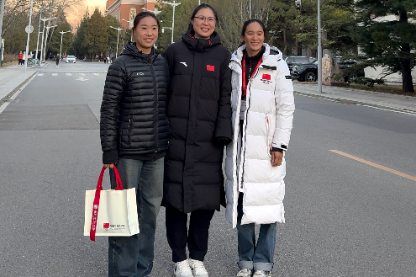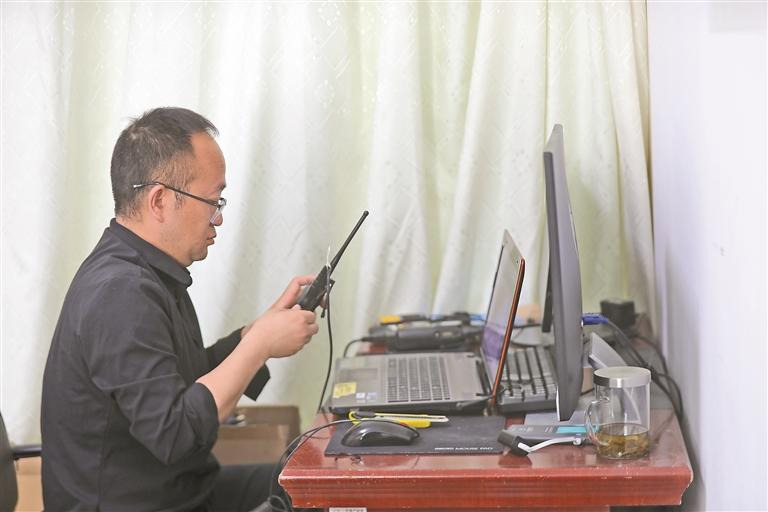Float proves just how vital science, tech are to country


On New China's 70th birthday, of all the parade floats showcasing China's historical changes since the 18th Communist Party of China National Congress in 2012, the one about science and technology was the first to meet the audience, and as a science reporter I thought to myself: what a time to be alive.
The float is intricately designed. It is a three-stage, rocket-like amalgamation that has the head of the Fuxing bullet train in the front, with China's most powerful supercomputer Sunway TaihuLight on top.
The rocket's body has sets of solar panels protruding like wings. It also serves as the foundation, carrying China's C919 passenger jet, Shenzhou rocket, Chang'e 4 moon rover and the Micius quantum communication satellite.
The tail consists of the Jiaolong deep-sea submersible, on top of which lie the Five-hundred-meter Aperture Spherical Telescope (FAST) and the Haima underwater remotely operated vehicle.
All these elements create a grand display of China's latest scientific and technological achievements ranging from space exploration to quantum physics. Placing the float at the forefront of all other recent accomplishments signifies how important science and technology are to the Party, the nation and the people.
Over the years, I have had the pleasure of writing about most of the instruments featured, as well as getting to know many of the scientists involved. So when I got to see the float so prominently displayed, a sense of familiarity and pride rose in my heart.
Never have our scientific communities had such a blessed opportunity, and therefore such profound obligation to use their innovation and ingenuity to meet the challenges ahead and fulfill the Chinese dream of the great rejuvenation of the Chinese nation.
Many foreign scientists I interviewed told me that the most exciting development in their fields are happening in China. Indeed, China's scientific progress is moving at breakneck speed, and research by Chinese scientists is now frequently featured on the cover of top academic journals such as Nature, Science and Cells.
The scientific feats that China has recently achieved are awe-inspiring.
Last month, Chinese scientists announced they had tried to treat a man with leukemia and HIV using gene-edited stem cells. While the treatment did not rid the man of the AIDS virus, the report said it was a very promising step, according to the New England Journal of Medicine, one of the world's top medical journals.
In addition, the Chinese Academy of Sciences published a report last week on using big data analysis related to earth sciences to support the United Nations' Sustainable Development Goals 2030, with a focus on eliminating hunger, providing clean water and sanitation, building sustainable cities and preserving lives on land and sea.
The report is one of the key documents representing China's growing efforts to pursue those goals. Its findings were submitted by the State Councilor and Foreign Minister Wang Yi to the UN during the Sustainable Development Goals Summit in New York last week.
These accomplishments prove that Chinese scientists are not only capable of pushing scientific boundaries and tackling hard issues for the nation's socioeconomic development, they are also willing to collaborate and share its wisdom with the rest of the world for the common prosperity of mankind.
As science and technology progress, China is also acutely aware of its weaknesses and the potential issues these new technologies can bring. In recent years, the Chinese government has issued new guidelines on managing artificial intelligence and the use of genetic materials, as well as new policy and reform to support basic research, research ethics and global governance of cutting-edge fields.
Keeping scientific exploration within the boundaries of law and morality can be a tricky and daunting task. China knows it cannot tackle it alone and therefore is willing to collaborate with foreign partners. Such accumulation and sharing of knowledge could spark the engine that can transform China into a future scientific powerhouse.
About 40 years ago, Guo Moruo, the first president of the Chinese Academy of Sciences, told his illustrious peers in his final public appearance that the "most glorious spring for science in our nation's history is here."
His speech, titled "Spring of Science", opened a new chapter in China's scientific development. Now, some 40 years later, the spring continues.
- Beijing eyes becoming a leading global hub for resolving intl commercial disputes
- China unveils a new AI meteorological model
- Beijing explores robots to support aging population
- Aid cadre decides to stay permanently in Xizang
- Inner Mongolia's two ports named national smart port models
- Ministry lodges stern representations with US over $11b arms sales plan to Taiwan




































